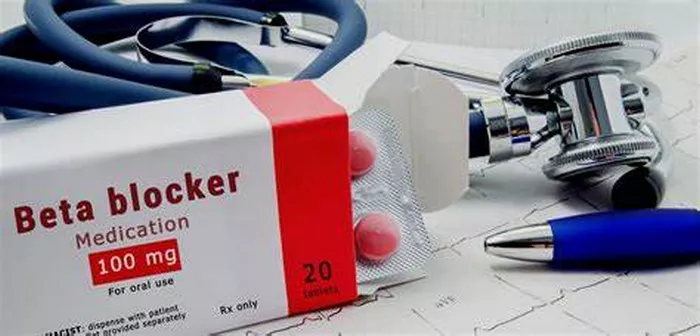Atrial flutter is a common cardiac arrhythmia characterized by rapid and organized contractions of the atria, typically at rates between 250 to 350 beats per minute. This condition can lead to significant morbidity, primarily due to its association with stroke and heart failure. The treatment of atrial flutter focuses on three main goals: controlling the heart rate, restoring normal rhythm, and preventing thromboembolic events. Medications play a crucial role in managing these objectives. This article discusses the ten best drugs for the treatment of atrial flutter, detailing their mechanisms, indications, and potential side effects.
Goals of Atrial Flutter Treatment
The treatment of atrial flutter is multifaceted, aiming to:
Slow the heart rate: This is often the initial step, as rapid atrial rates can lead to inefficient ventricular filling and reduced cardiac output.
Restore normal rhythm: If the arrhythmia persists, pharmacological or electrical interventions may be necessary to revert the heart to a normal sinus rhythm.
Prevent blood clots: Atrial flutter can cause blood pooling in the atria, increasing the risk of thrombus formation.
Anticoagulation therapy is crucial to mitigate this risk.
Medications for Atrial Flutter
1. Beta-Blockers
Beta-blockers, such as metoprolol, atenolol, and propranolol, are commonly used to control ventricular rate during atrial flutter. They work by blocking beta-adrenergic receptors, leading to decreased heart rate and contractility.
Indications: Effective for rate control in patients with atrial flutter.
Side Effects: Fatigue, bradycardia, and hypotension.
2. Calcium Channel Blockers
Diltiazem and verapamil are calcium channel blockers that help slow the heart rate by inhibiting calcium influx into cardiac cells, leading to reduced conduction through the AV node.
Indications: Used for rate control, especially in patients without significant structural heart disease.
Side Effects: Hypotension, bradycardia, and peripheral edema.
see also: Can Too Much Serotonin Cause Heart Problems?
3. Digoxin
Digoxin is a cardiac glycoside that increases vagal tone and decreases conduction through the AV node, making it useful for rate control, particularly in patients with heart failure.
Indications: Often used in patients with concurrent heart failure.
Side Effects: Nausea, vomiting, and potential for toxicity, particularly in renal impairment.
4. Amiodarone
Amiodarone is a class III antiarrhythmic that prolongs the action potential and refractory period in cardiac tissues. It is effective for both rhythm control and rate control.
Indications: Used for both acute and chronic management of atrial flutter.
Side Effects: Thyroid dysfunction, pulmonary toxicity, and skin changes.
5. Sotalol
Sotalol is another class III antiarrhythmic that is particularly effective in maintaining sinus rhythm after conversion from atrial flutter.
Indications: Used for rhythm control in patients with atrial flutter.
Side Effects: Risk of proarrhythmia and significant QT interval prolongation.
6. Dofetilide
Dofetilide is a potent class III antiarrhythmic that is effective in converting atrial flutter to sinus rhythm and maintaining that rhythm.
Indications: Typically initiated in a hospital setting due to the risk of proarrhythmia.
Side Effects: Renal impairment and QT prolongation.
7. Flecainide
Flecainide is a class IC antiarrhythmic that can be used for rhythm control in patients without structural heart disease. It works by blocking sodium channels, leading to decreased conduction velocity.
Indications: Effective for converting atrial flutter to sinus rhythm.
Side Effects: Risk of proarrhythmia, especially in patients with structural heart disease.
8. Propafenone
Propafenone is similar to flecainide and is used for rhythm control. It has additional beta-blocking properties, which can help with rate control.
Indications: Used in patients without significant structural heart disease.
Side Effects: Dizziness, metallic taste, and potential for proarrhythmia.
9. Quinidine
Quinidine is an older antiarrhythmic that can be used for rhythm control in atrial flutter. It works by blocking sodium channels and has some anticholinergic effects.
Indications: Less commonly used today, but can be effective in certain cases.
Side Effects: Gastrointestinal disturbances and potential for proarrhythmia.
10. Anticoagulants
To prevent thromboembolic complications associated with atrial flutter, anticoagulants are essential. Warfarin has traditionally been used, but newer agents like apixaban, rivaroxaban, and dabigatran offer alternatives with fewer monitoring requirements.
Indications: All patients with atrial flutter should be assessed for anticoagulation therapy based on stroke risk.
Side Effects: Vary by agent; warfarin requires INR monitoring, while newer agents have a lower risk of bleeding but may not be suitable for all patients.
Conclusion
The management of atrial flutter involves a comprehensive approach that includes both rate and rhythm control, as well as anticoagulation to prevent stroke. The choice of medication depends on individual patient factors, including the presence of omorbidities and the risk of thromboembolic events.
In clinical practice, beta-blockers and calcium channel blockers are often first-line agents for rate control, while antiarrhythmics like amiodarone, sotalol, and dofetilide are crucial for rhythm control. Anticoagulation strategies must be tailored to the patient’s stroke risk profile, ensuring a balanced approach to treatment.


